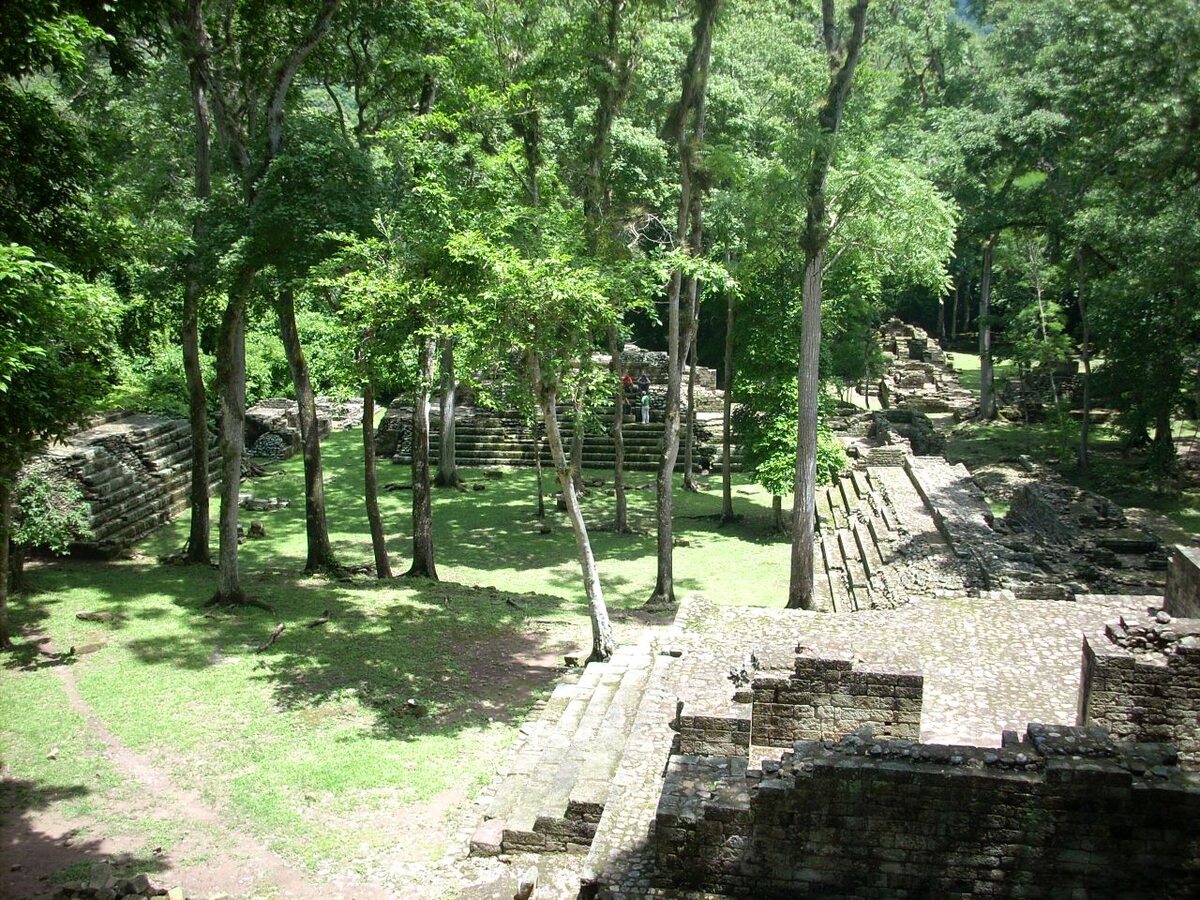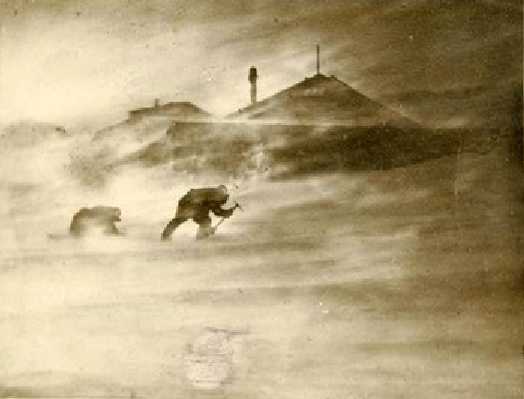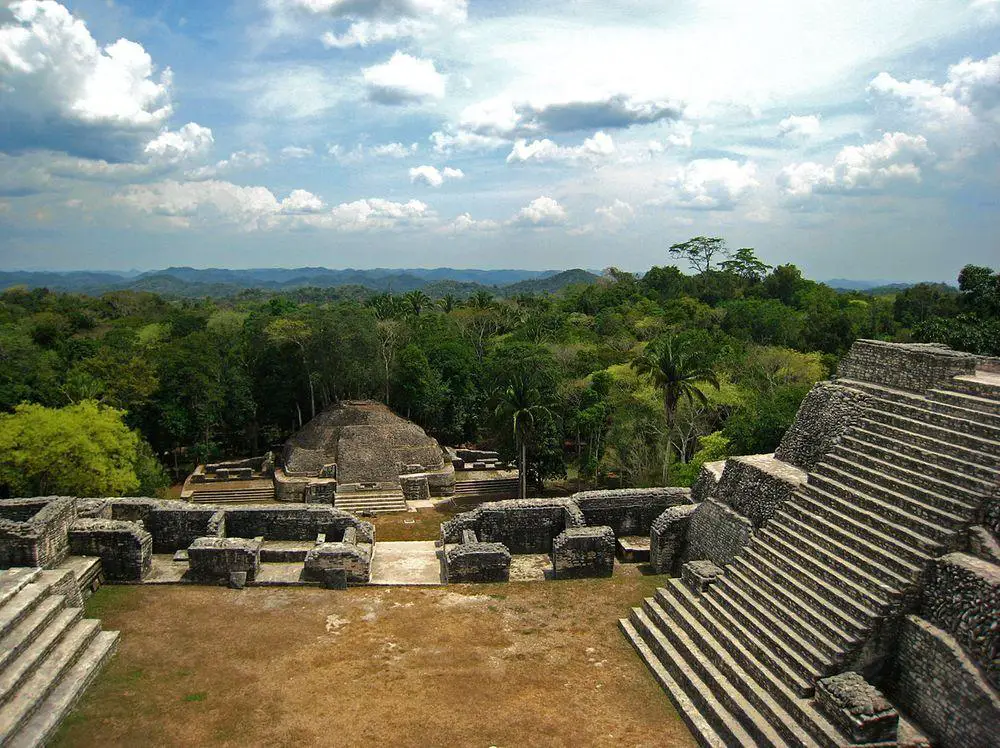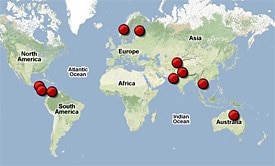World 🢖 North America 🢖 Central America 🢖 Honduras
Places with meteorological phenomena 🢔 Legendary wonders 🢔 Categories of wonders
Wonder
Yoro Fish Rain – Lluvia des Peces
 In short
In short
The story about the Yoro Fish Rain is weird and, most likely a hoax, but – interesting!
 37.3%
37.3%
GPS coordinates
Location, address
Map of the site
If you see this after your page is loaded completely, leafletJS files are missing.
 In detail
In detail
Near Yoro town there happens a heavy rain in May – July. That would be nothing that special – but after this rain, countless small, living fishes are left jumping in the fields as if they have fallen from the sky.
Thunderstorm and fish
This “fish rain” takes place at the beginning of the rainy period somewhere in May – July. There comes a day when in the afternoon comes a frightening, dark cloud with furious lightning and thunder. Downpours of heavy rain and strong winds continue at least 45 minutes and may last even for several hours.
As the storm leaves, people of Yoro pick up baskets and run out to the swampy meadows of La Pantanal at the foot of extinct volcano El Mal Nombre (Bad Word). Hundreds and even thousands of jumping, live fish are found in the wet meadows as if fallen from the sky during the storm. People collect the fish to bring it home and eat – fish is told to have a specific taste, different from the taste of common fish.
To be correct – a major part of fish though is not collected from the ground but is caught in the temporary basins and streams formed by heavy rain.
It is not known when this phenomenon started – first reports are from the middle of the 19th century when first missionary Father Subirana came here. We may believe that this rain has existed before as well.
Popular festivity
Since 1998 there is an organized festival known as “Festival de la Lluvia de Peces” in Yoro city to mark this unusual phenomenon.
Festivity starts early in the morning with a loud wake-up salute and people are called by loudspeakers to attend a fish market at city hall. Fish is a specialty of this festivity, although in general there is sold common fish, not the one which reportedly fell from the sky. Most people see this just as another festivity without too much interest in the traditions of Yoro or the weird natural phenomenon.
Yoro is using this unusual event as a tourism marketing tool. Church also has a say in this festivity – many believe that this miracle is sent by God as a response to the prayer of Father Subirana.
Father Subirana and Jicaques
Spanish priest Father José Manuel (Jesus de) Subirana has been a significant figure in the history of Christianity in Honduras. He arrived in Honduras in 1855 and worked here until his death in 1864, converting to the Christian faith several groups of indigenous people. He is revered as a courageous and fair missionary, helping local people to fight for their rights to the land of their ancestors.
One of such groups of indigenous people were Jicaques who lived around contemporary Yoro and remained independent until the middle of the 19th century. Father Subirana with persuasion and God’s word did what others could not achieve with weapons – he managed to "return" Jicaques to the Christian world. His intents were noble – but nowadays no one speaks in Jicaque language anymore.
Today the name of Father Subirana though is closely linked with the legend of Yoro fish rain, while his real achievements are less remembered. The legend tells the following:
“Father Subirana saw how poor are the people in Honduras and prayed 3 days and 3 nights asking God for a miracle to help the poor people and to provide them food. After these three days and nights, God took note of this, and there came a dark cloud. Lots of tasty fish rained from the sky, feeding all the people. Since then this wonder is repeated every year.”
Is there scientific explanation?
Wondermondo, khem…, does not believe in God. Maybe a little, but not too much. There needs to be scientific explanation without divine intervention.
First – it seems that this phenomenon has not been investigated too much by scientists. There are rumors about an expedition organized by the National Geographic Society in the 1970s, who were eyewitnesses to the fish rain. Unfortunately, there can not be found an article about this in "National Geographic Magazine".
The information about the fish is contradicting. All agree that it is rather small, some 12 – 15 cm long and might be a kind of sardine. Some say that fish is blind – but in pictures, there are well-seen eyes. Some say that this is freshwater fish, some – that is a sea fish, some – that it is subterranean fish. Again – all agree that this kind of fish is not seen in waters around Yoro. Sardines live in the sea but occasionally they migrate by rivers inland, also in Honduras.
Brought here by waterspout?
First seemingly obvious explanation would be – fish is "caught" in the sea by powerful waterspout, sucked up in the clouds and then shipped directly to Yoro where it rains down.
Waterspouts really have the ability to pump up water with all in it. There are also reports about incredibly large, dense crowds of sardines seen elsewhere in the oceans – thus theoretically waterspout could meet such sardine run and bring them directly to the sky. There is also an occasional tale about a man whose finger was broken by a falling sardine near Yoro.
But there are needed too many unique coincidences to believe that yearly fish rain is made possible by tornadoes. Judge yourselves:
- Once per year in May – July there should come a tornado or groups of tornadoes in the seas next to Honduras.
- These tornadoes should find a sardine run. Sardine runs are not that frequent.
- Sardines should be brought up in the clouds without harming them too much. After all, they are found near Yoro jumping, alive and unharmed.
- This heavenly aquarium should safely float at least 75 km towards Yoro. Exactly towards Yoro, passing several mountain ranges, which are higher than Yoro.
- As the cloud reaches Yoro, it should rain down there, a bit southwest from the town. Some try to explain this by the presence of iron ore near the city – it starts to thunder and thunder starts the rain.
- Fish should be lowered in a gentle way so that they can stay alive and jump in the grass while waiting for people with baskets.
- All fish safely land in meadows. None are found on the roofs of the buildings.
Sounds credible? Definitely not.
Subterranean fish?
As the waterspout hypothesis loses credibility, there is another, more credible explanation.
It happens that in the cave streams deep below the land surface live specific fish, sometimes unknown to people above.
One such example is Delminichthys adspersus (Heckel, 1843) living in Crveno Jezero, Croatia. In dry springs this fish has been occasionally caught in springs near Crveno Jezero – most likely the falling level of water forces the fish to look for other habitats.
Something similar seems to be going on in Yoro – as the dry period of the year is coming to the end, crowds of subterranean fishes seem to be desperate enough to seek water wherever it is.
Sudden downpour of rain washes out this fish through unknown spouts from their unknown subterranean rivers to the meadows near Yoro. Stormwater floats over the meadows and then disappears leaving helpless – but otherwise unharmed – fish jumping on the grass or in temporary basins.
This idea is further supported by the fact that no one has really seen fish falling from the sky.
There are unclear issues regarding this hypothesis as well:
- Are there large subterranean rivers in Yoro able to sustain thousands of fish? None is found thus far (but has anyone looked for them?). Honduras is very rich in caves, most are unknown to speleologists.
- Collected fishes seem to have eyes and eyewitnesses tell that the eyes are lucid and moving. Pictures often show fish with white eyes but locals tell that it is because images show fish that is dead for some hours. Fishes in subterranean rivers on contrary are blind and some even do not have eyes.
Migration of sardines?
There is one more explanation – that swarms of sardines come from the sea and migrate 200 km upstreams in Aguán River and are washed on meadows during the flash floods caused by heavy rain. After all, thus far they have been swimming safely thanks to the dry period and were caught by flood without caveat – sardines do not know too much about rivers and floods.
Although somewhat boring, this last hypothesis seems more credible. But it has some flaws as well and the main is – it is not proven yet.
Thus Yoro Fish Rain still is not explained.
References
- Lluvia de peces en Yoro, Univision.com. Accessed on November 28, 2010. Many images!
Yoro Fish Rain is included in the following article:
 Linked articles
Linked articles

Wonders of Honduras
This small Central American country offers numerous beautiful natural monuments as well as some exciting archaeological monuments.

Meteorological phenomena
Unusual weather conditions can happen in any place in the world. But there are locations where unusual meteorological phenomena are observed frequently – even every day.

Wonders of Central America
Central America is a transition: a land bridge between the enormous North American and South American continents, a narrow divide between the Atlantic and Pacific oceans, and a meeting point of the mysterious, grand civilizations of the past and the rich European heritage.
 Recommended books
Recommended books
Weather: The Ultimate Book of Meteorological Events
Weather: The Ultimate Book of Meteorological Events is a compilation of some of the most spectacular weather photography and writing in the world. Adapted from over 20 years of material from the bestselling Weather Guide calendar, this comprehensive volume combines dozens of essays from more than 20 meteorology and climate change experts.
Al Roker’s Extreme Weather
Dive deep into a world of fascinating weather with everyone’s favorite meteorologist, Al Roker!
With this mesmerizing book that covers a wide range of topics, readers will learn about the conditions that generate unique weather occurrences like red sprites, thundersnow, and fogsicles.



